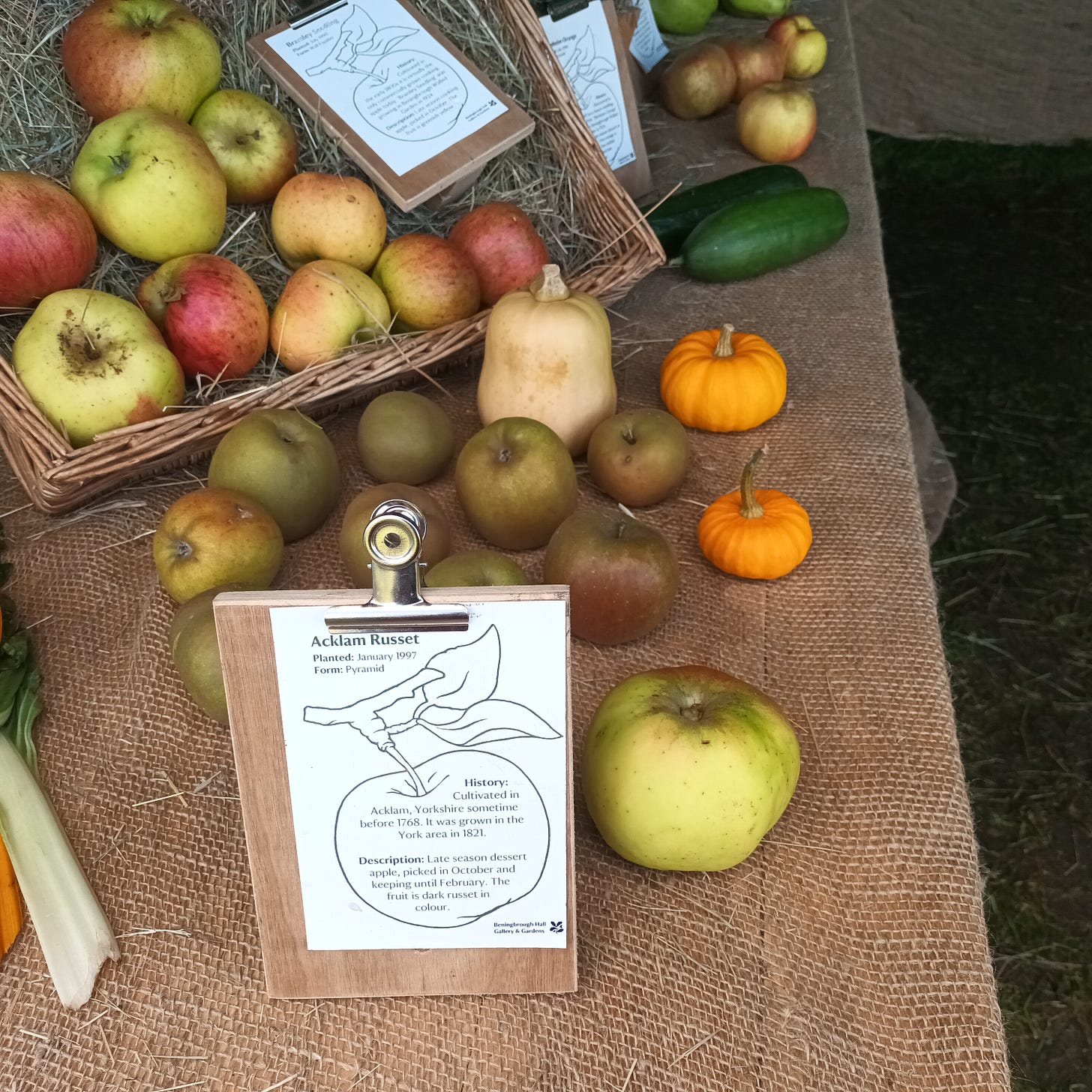The Passing of Time in a Garden
A couple of weeks ago I wrote a post about apples, and history, and Anne Boleyn. Writing it took me back, powerfully, to my school days. Those gossipy anecdotes from history feel as full of juice and crunch as an apple on a crisp autumn morning. They are inextricably tied to memories of new pencils, new timetables, and school bells. Still thinking about nostalgia, I read Horticulturalish’s lovely post about planting ‘to let the mind rest on a memory’. As her garden flowers, it is filled with the gentle ghosts whose names are memorialised in her choices of varieties. It made me think about the hold the past has on the present, and the way these circling-points of the year - new school term; new year - seem to spin by faster and faster, faster and faster, the older we get, the more we have left behind.
September 1st is the start of meterological autumn, and this year it fell on the last day of the summer holidays. My daughter insisted on trying on her new school uniform - the pleated skirt; the knee-high socks - in preparation for school. For her, time cannot pass fast enough. Yesterday morning she dragged me out to the school gate a full twenty minutes early, and we stood watching the house martins looping and twittering back and forth from their nests under the eaves. The school in our village is tiny: fifty-odd children, with a building that started out life as a single-room late-Victorian schoolhouse, with a steep pitched roof, ornate rooftiles and tall chimneypots. Our house, next door, was home to the schoolmaster, his wife and nine children. When we bought it, I planted an old local apple, ‘Acklam Russet,’ first recorded in 1768, on the east-facing gable. Only later did I notice the patchwork of old hand-forged nails already there, showing where generations of previous gardeners had already trained cordons of fruit.
I love these tiny, tangible reminders of things that would otherwise leave no trace. Those old nails hook me onto the past. I can almost hear the dull snap of the Victorian gardener’s heavy knife, as he cuts the branch back to its fruiting spur. I can almost feel the weight of that ripening apple he lifts to test its readiness for picking and storing for winter. The apple tree I planted starts the circle again, rooting the present deep in the soil of the past. As for the house martins, looping and swirling, you would imagine their lives pass in a flash - and so they do - but the mud-daub nests they build under the eaves can last for decades, even centuries, patiently patched and renewed with each new spring.
Circle back further, 500 years. The monks are still tending their orchards in wind-swept Yorkshire monasteries where the sheep graze. The Dissolution of the Monasteries is eleven years into the future, though Henry’s right-hand man Wolsey has begun acquring monastic properties and incomes to schools and colleges in his name. In most monasteries, the orchard doubles as a graveyard. In death the monks sleep beneath the trees they have planted. Their living brothers tread the grass between the trees, carrying their books or resting eyes tired from peering at too-small script. Perhaps some grass has escaped the Maytime scythe and grown long, mellowing into soft bleached gold in the late summer sun, for mown or trodden mazes are an ancient feature of the monastic orchard, designed to aid this meditation and relaxation. These are not mazes designed to get lost in. Their circling paths are intended to bring you back, over and over, across the same ground until you have combed out all your tangled thoughts, until you have looped those skeins of memory into order.
The apples the monks planted are long lost to history. But at Beningbrough Hall, the National Trust garden near me, is the orchard preserving old and local varieties of apples. In October they display dozens of different varieties of fruit, and offer talks on how the orchard has been planted and planned. Two years ago, my daughter dragged me there for my 39th birthday. Although she was only six, it took her the briefest glance at the wooden crates of apples, the bowls of medlars and quinces, to recognise this was my kind of thing, and hers. We found our Acklam Russet. One of the gardeners began his talk, she skipped away to run through the the tiny floor maze set out under the trees.
My garden holds all of those memories together - the apples for Anne Boleyn and the apples for my Victorian schoolteacher; the apple trees the monks planted in their graveyards and the apple trees growing at Beningbrough that we visited when my daughter was six. Time races away like the house martins in flight, like skipping steps through a maze of grass, and all those centuries of memory remind me how fast it will all go.




Such beautiful writing - and I am also VERY into apples, I love exploring all the different types whenever I go to a National Trust place. We went to the community orchard at the weekend and picked bagfuls of quince and apples and medlars and I will be looking in my 18th century cookbooks to get some ideas of what to do with them.